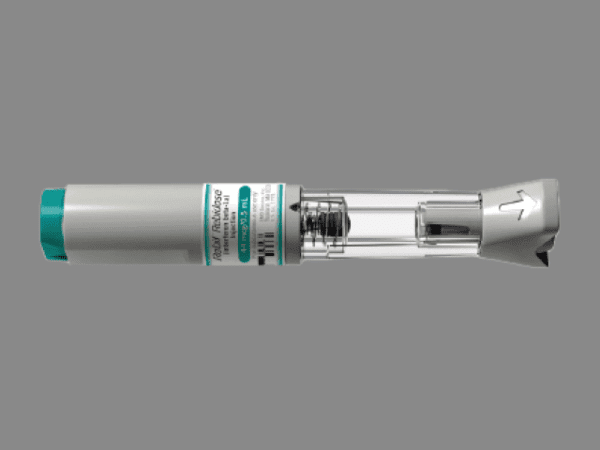Interferon beta-1a and Alcohol/Food Interactions
There is 1 alcohol/food/lifestyle interaction with interferon beta-1a.
Alcohol (Ethanol) Interferon Beta-1A
Moderate Drug Interaction
MONITOR: Coadministration of beta interferons with other agents known to induce hepatotoxicity may potentiate the risk of liver injury. Use of beta interferons has been associated with rare cases of liver injury, including autoimmune hepatitis and severe liver damage leading to hepatic failure, some of which required transplantation. In some cases, these events have occurred in the presence of other drugs that have been associated with hepatic injury. Symptoms of liver dysfunction typically began from 1 to 6 months following the initiation of therapy. Asymptomatic elevation of hepatic transaminases (particularly SGPT) have also been reported but is common with interferon therapy.
MANAGEMENT: The risk of hepatic injury should be considered when beta interferons are used with other potentially hepatotoxic agents (e.g., acetaminophen; alcohol; androgens and anabolic steroids; antituberculous agents; azole antifungal agents; ACE inhibitors; cyclosporine (high dosages); disulfiram; endothelin receptor antagonists; other interferons; ketolide and macrolide antibiotics; kinase inhibitors; minocycline; nonsteroidal anti-inflammatory agents; nucleoside reverse transcriptase inhibitors; proteasome inhibitors; retinoids; sulfonamides; tamoxifen; thiazolidinediones; tolvaptan; vincristine; zileuton; anticonvulsants such as carbamazepine, hydantoins, felbamate, and valproic acid; lipid-lowering medications such as fenofibrate, lomitapide, mipomersen, niacin, and statins; herbals and nutritional supplements such as black cohosh, chaparral, comfrey, DHEA, kava, pennyroyal oil, and red yeast rice). Liver function tests should be monitored at regular intervals and the interferon dosage reduced if SGPT rises above 5 times the upper limit of normal. The dosage may be gradually re-escalated when enzyme levels return to normal. Patients should be advised to seek medical attention if they experience potential signs and symptoms of hepatotoxicity such as fever, rash, itching, anorexia, nausea, vomiting, fatigue, malaise, right upper quadrant pain, dark urine, pale stools, and jaundice. If liver injury is suspected, interferon therapy should be promptly discontinued due to the potential for rapid progression to liver failure.
References (4)
- (2002) "Product Information. Betaseron (interferon beta-1b)." Berlex Laboratories
- (2001) "Product Information. Avonex (interferon beta-1a)." Biogen
- (2002) "Product Information. Rebif (interferon beta-1a)." Serono Laboratories Inc
- (2014) "Product Information. Plegridy (peginterferon beta-1a)." Biogen Idec Inc
Switch to consumer interaction data
Interferon beta-1a drug interactions
There are 346 drug interactions with interferon beta-1a.
Interferon beta-1a disease interactions
There are 4 disease interactions with interferon beta-1a which include:
More about interferon beta-1a
- interferon beta-1a consumer information
- Check interactions
- Compare alternatives
- Reviews (100)
- Side effects
- Dosage information
- During pregnancy
- Drug class: interferons
- En español
Related treatment guides
Drug Interaction Classification
| Highly clinically significant. Avoid combinations; the risk of the interaction outweighs the benefit. | |
| Moderately clinically significant. Usually avoid combinations; use it only under special circumstances. | |
| Minimally clinically significant. Minimize risk; assess risk and consider an alternative drug, take steps to circumvent the interaction risk and/or institute a monitoring plan. | |
| No interaction information available. |
See also:
Further information
Always consult your healthcare provider to ensure the information displayed on this page applies to your personal circumstances.


